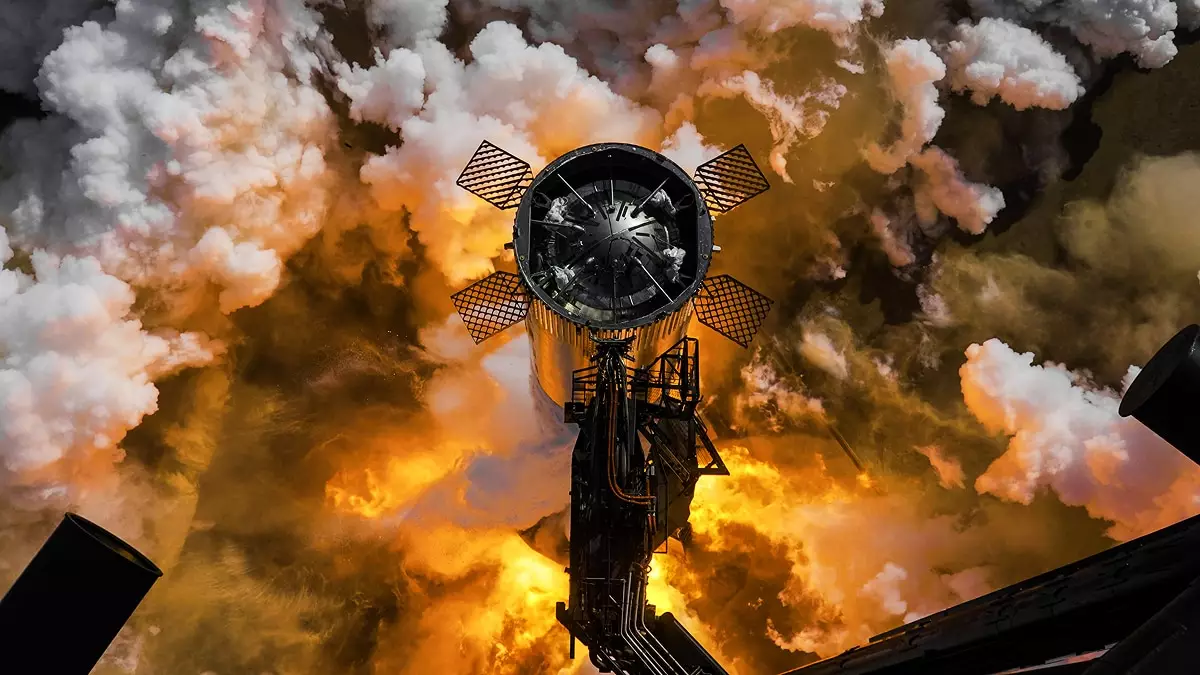SpaceX has made significant strides in its preparations for the next integrated flight test of its Starship launch system. Recently, the company conducted a series of static fire tests at its Starbase facility in Texas, focusing on both the Super Heavy booster and the Starship’s upper stage. These tests are pivotal in assessing the readiness of the vehicle for forthcoming missions. During the full-duration static fire of the Super Heavy booster, all 33 Raptor engines were ignited, simulating the demanding conditions that will be faced during an actual launch. This thorough examination ensures that both the engines and the booster function as a cohesive unit, ready for the challenges of space travel.
In addition to the Super Heavy, the second stage of the Starship system underwent its own series of tests to further refine its engine performance. By testing under variable thrust conditions, SpaceX engineers sought to replicate the dynamic scenarios that the spacecraft will encounter during flight. These evaluations are crucial for understanding how the Vehicle Propulsion System behaves under varying conditions, ultimately leading to enhancements in performance metrics. The information gleaned from these tests will not only inform adjustments to the Starship design but also bolster the reliability of future missions.
As SpaceX gears up for its next major milestone, known as IFT-8, scheduled for potentially late February, the company is also cognizant of regulatory protocols. The Federal Aviation Administration (FAA) must provide final authorization before any launch can occur. Anticipated launches will allow SpaceX to further fine-tune its reusable rocket technology, which is central to its expansion plans within the aerospace sector. Recent history shows that the company is not one to shy away from challenges, with their last test flight, IFT-7, showcasing both successes and setbacks. While the booster was successfully recovered using robotic arms, communication with the upper stage was lost during its ascent, leading to the unfortunate conclusion of debris falling in the Caribbean.
Learning from Past Experiences
Each test provides invaluable learning opportunities, prompting engineers to analyze and address issues that may have contributed to the loss of Starship in previous tests. Enhancements in flight stability and operational protocols are high on the agenda, aiming to achieve controlled descents and improved communication channels during missions. Drawing lessons from past difficulties is essential not just for immediate corrections but also for laying the groundwork for more robust future missions.
SpaceX’s commitment to advancing the Starship system is evident through its ongoing efforts and future plans, particularly in relation to NASA’s Artemis program. The Starship lander is slated to play a crucial role in returning astronauts to the lunar surface as part of Artemis 3, targeted for a 2027 launch. Before human missions can be conducted, additional testing will be pivotal to validating the vehicle’s durability and capabilities, solidifying SpaceX’s role in both governmental and commercial space exploration endeavors.
While the Starship program faces its share of hurdles, the testing phases and iterative improvements reflect the tenacity and innovative spirit that SpaceX embodies. As they advance toward new frontiers, the lessons learned today will undoubtedly shape the missions of tomorrow.



Leave a Reply